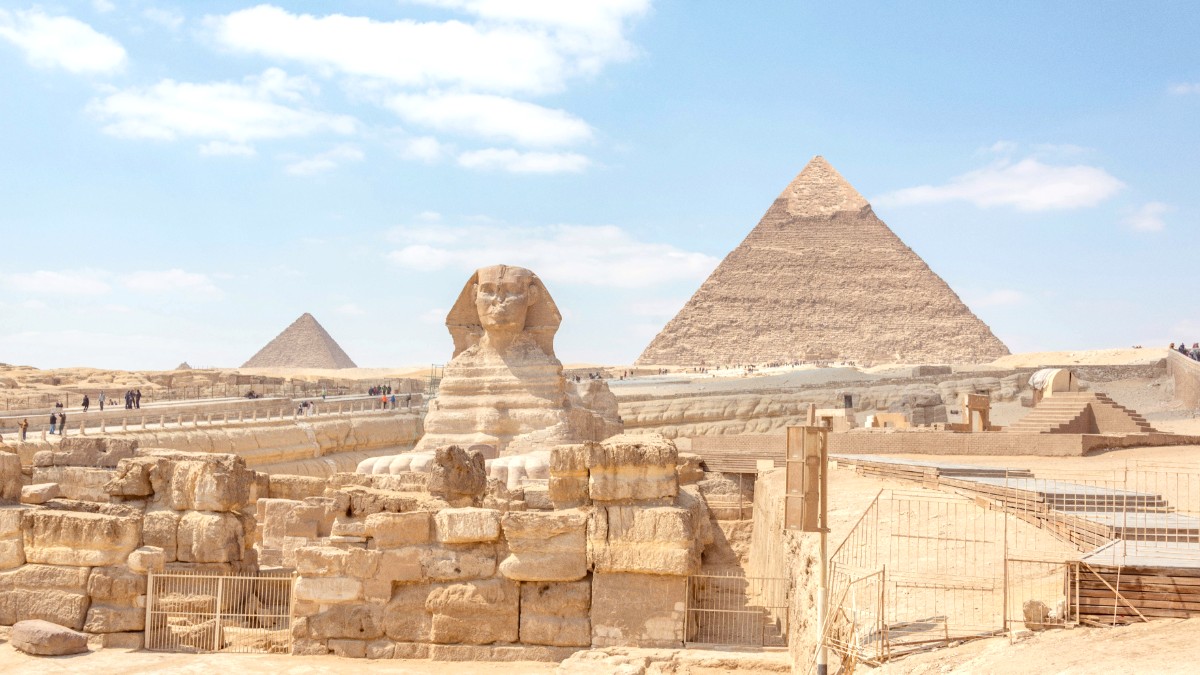
Cairo, Egypt
Saqqara & Dahshur: Located 1-1.5 hours south of Giza. Saqqara hosts the Step Pyramid of Djoser, thought to be the world's oldest stone structure. This area also includes various tombs with reliefs and the Serapeum. Dahshur displays the Bent Pyramid and the Red Pyramid, Egypt's first successful true pyramid. These sites feel less busy than Giza.
Memphis: About 1 hour south of Giza, often seen with Saqqara/Dahshur. Memphis was Egypt's ancient capital. Today, it stands as an open-air museum featuring a colossal statue of Ramses II and an alabaster sphinx. A combined trip to Saqqara, Dahshur, and Memphis typically takes a full day (6-8 hours).
Cairo presents city life, but natural areas are within day trip range.
Wadi El Rayan Protectorate (Fayoum Oasis): A 2-3 hour drive southwest of Cairo. This protected area features Egypt's only waterfalls (Wadi El Rayan Waterfalls), two large lakes (Lake Qarun), vast sand dunes, and diverse birdlife. Sandboarding is an option here.
There are no distinct seasonal natural events directly within Cairo or Giza. Very rare desert rains might cause desert flowers to bloom in the wider desert region, but this is not a predictable occurrence for short visits.
Expand your cultural exploration beyond Cairo's immediate vicinity.
Alexandria, 2-3 hours from Cairo by train or bus, presents a distinct historical view with Roman and Greek ruins, Catacombs of Kom El Shoqafa, Pompey's Pillar, and the modern Bibliotheca Alexandrina.
Explore via organized tours to the Fayoum Oasis or the Nile Delta. These tours offer a view into traditional Egyptian village life, agriculture, and local customs, a contrast to the capital's bustle.
Various Coptic monasteries, like those in Wadi El Natrun, are day trip options. These ancient Christian sites provide a spiritual and historical outing.
Alexandria is a different chapter of Egyptian history, blending Greek and Roman influences with ancient traditions. Its sites present unique architectural styles and stories.
Tours into the Nile Delta or Fayoum Oasis offer perspectives on daily life outside the capital. See how communities thrive with traditional farming methods and local customs.
Extend your trip to explore other parts of Egypt.
A natural progression after Cairo. Discover its unique historical sites, Greco-Roman past, and the Bibliotheca Alexandrina.
Fly or take an overnight sleeper train. Luxor is an open-air museum, featuring Karnak Temple, Luxor Temple, Valley of the Kings, Hatshepsut's Temple, and Colossi of Memnon.
Fly or bus to Sharm El Sheikh, Hurghada, or Dahab. These locations have diving, snorkeling, beaches, and relaxation after sightseeing.
For ancient Egyptian history, Luxor is a top choice. Further south, Aswan features Philae Temple, the High Dam, and Nubian Village visits.
A common route involves flying into Cairo, exploring for a few days, then flying or taking a train to Luxor. From Luxor, a Nile Cruise to Aswan is popular, followed by a flight back to Cairo or an international hub from Aswan. Another option combines Cairo with a Red Sea beach vacation.
Start in Cairo, then experience a cruise between Luxor and Aswan.
Combine Cairo's history with relaxation at a Red Sea resort.
Domestic flights and overnight trains simplify travel between distant cities.